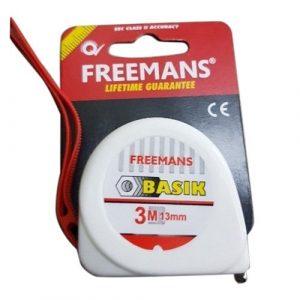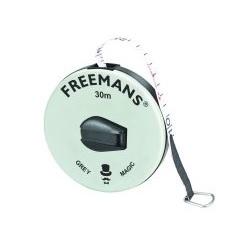
In the matter between FMI Limited Vs. Ashok Jain & Ors, the Plaintiff filed a suit before the honorable Delhi High Court seeking a permanent injunction against the defendant, Ashok Jain and others arraigned defendants in respect of trademark “FREEDOM” under class 9 for use with respect to measuring tapes.
FMI Limited being the plaintiff was the predecessor in use and title for trademark “FREEMANS” registered under class 9 for measuring tapes under application no.: 215880 on 06.12.1963, in respect of tape measures under class 9, and the same trademark was registered under No. 44095 on 26.06.1985 with respect to measuring tapes and allied goods under the same class.
Prior Use from the year 1950 for trademark FREEMANS:
It was the contention of the FMI Limited that, its predecessors were the manufacturers of metal wired tape under the trademark “FREEMANS” and were in continous use since 1950 and due to its long and continous use of trademark, the FREEMANS tape has became leading brand in india with respect to measuring tapes. It was also submitted on behalf of the Plaintiff that, their products under the brand “FREEMANS” are sold in more than 60 countries and therefore, it has global reputation.
Defendants conflicting Trademark FREEDOM:
The defendants vehemently denied that, their trademark was visually similar to that of the plaintiff‟s. It was submitted that on a mere look at the two trademarks, it would be established that the manner and style in which the two marks are written, are completely different. In the plaintiff‟s mark, the word FREEMANS is written prominently whereas in the defendant‟s mark, the alphabet „F‟ is written within a circle and the word FREEDOM is written on the circumference. The Defendant also denied that both the trademarks sound phonetically similar.
Para 13. Applying the above-mentioned test to the facts of the present suit, I find that the defendants trademark FREEDOM is deceptively similar to that of the plaintiffs trademark FREEMANS. Both the competing trademarks represent the same class of goods i.e. measuring tapes. Both the trademarks also have an inherently distinct connotation i.e., the trademark has no relation with the product being sold. In addition, it should be kept in mind that while deciding cases such as the present suit, the Court should view the two trademarks from the eyes of a person with imperfect recollection.
Para 14. Further, the fact that the plaintiff’s trademark has been in the market for over five decades and is now known globally is evidence to the fact that the plaintiff has built up a reputation in the market and its products have acquired enormous goodwill. To take advantage of this, the defendants seem to have the intention of passing off their product as that of the plaintiff by adopting a name which is similar to the plaintiff’s trademark. In addition, the fact that the defendant no.1 was the earlier distributor of the plaintiff’s products shows that adoption of the said trademark was not merely a coincidence and that he had the intention of passing off his products as that of the plaintiff’s.
Analysis and Discussion:
The Honorable High Court noted through the evidence of the Plaintiff and of the Defendants that, Defendant Ashok Jain was the erstwhile distributor of Freemans branded measuring tape and he was also known and identified in the market as “FREEMANS FITEWALLA”. Therefore, it can be inferred that Defendant had attempted to exploit the goodwill of Plaintiff’s mark by launching the same product with a deceptively similar mark as “FREEDOM”. The term “FREEMANS” can be interpreted as a man who is free, which is very much akin to the word freedom, and therefore, the use of the term “FREEDOM” as the trademark for measuring tapes in Class 9 can be held to be deceptively similar.






